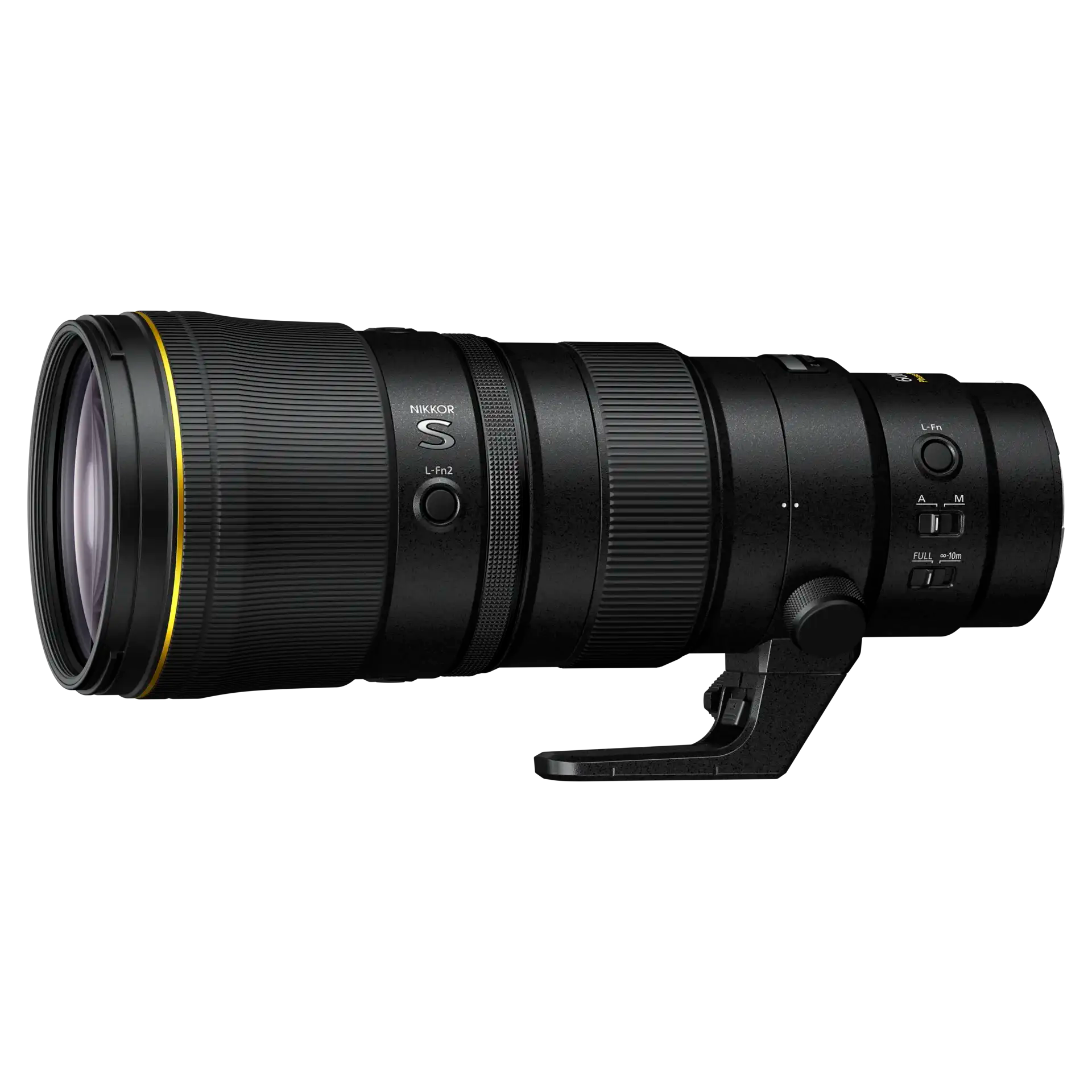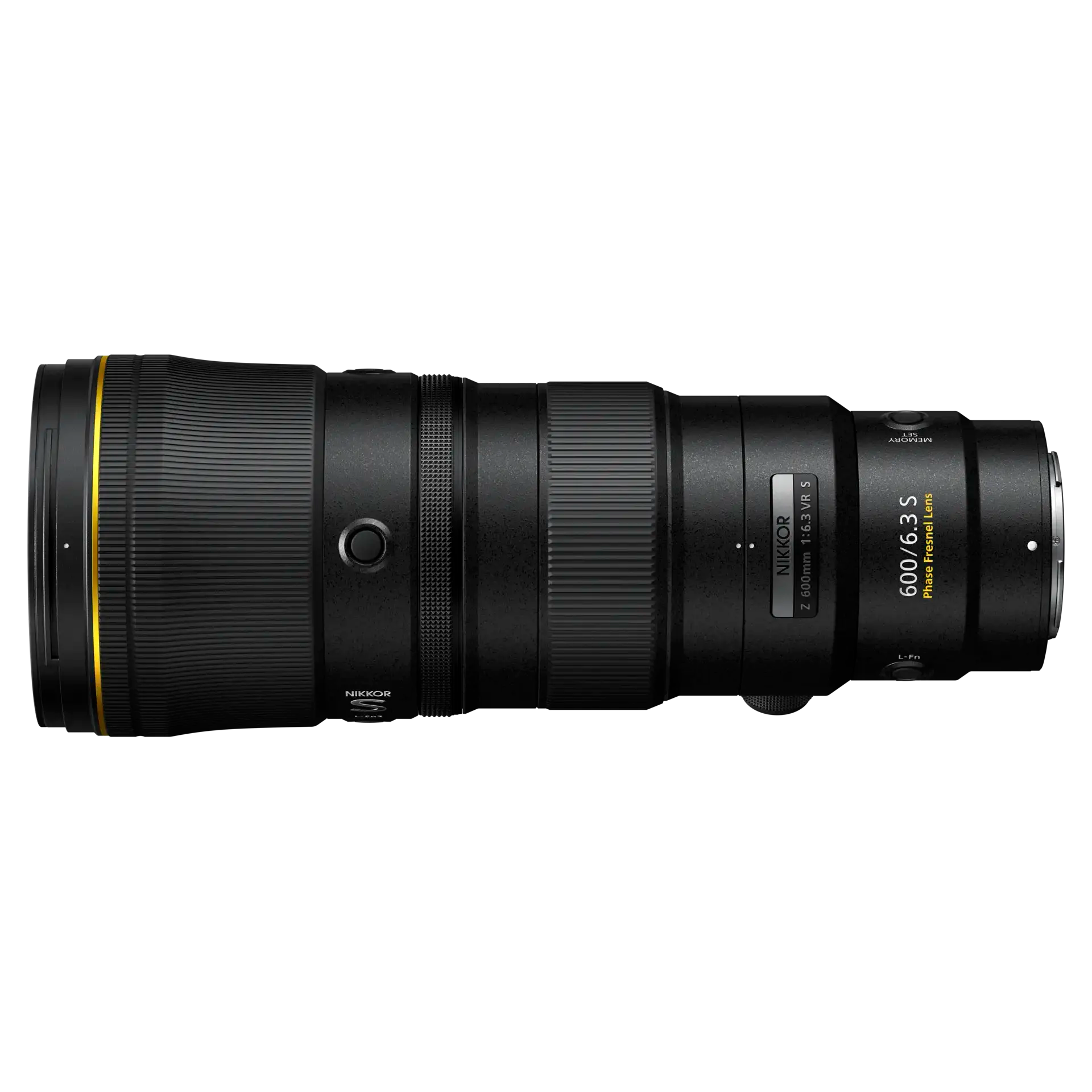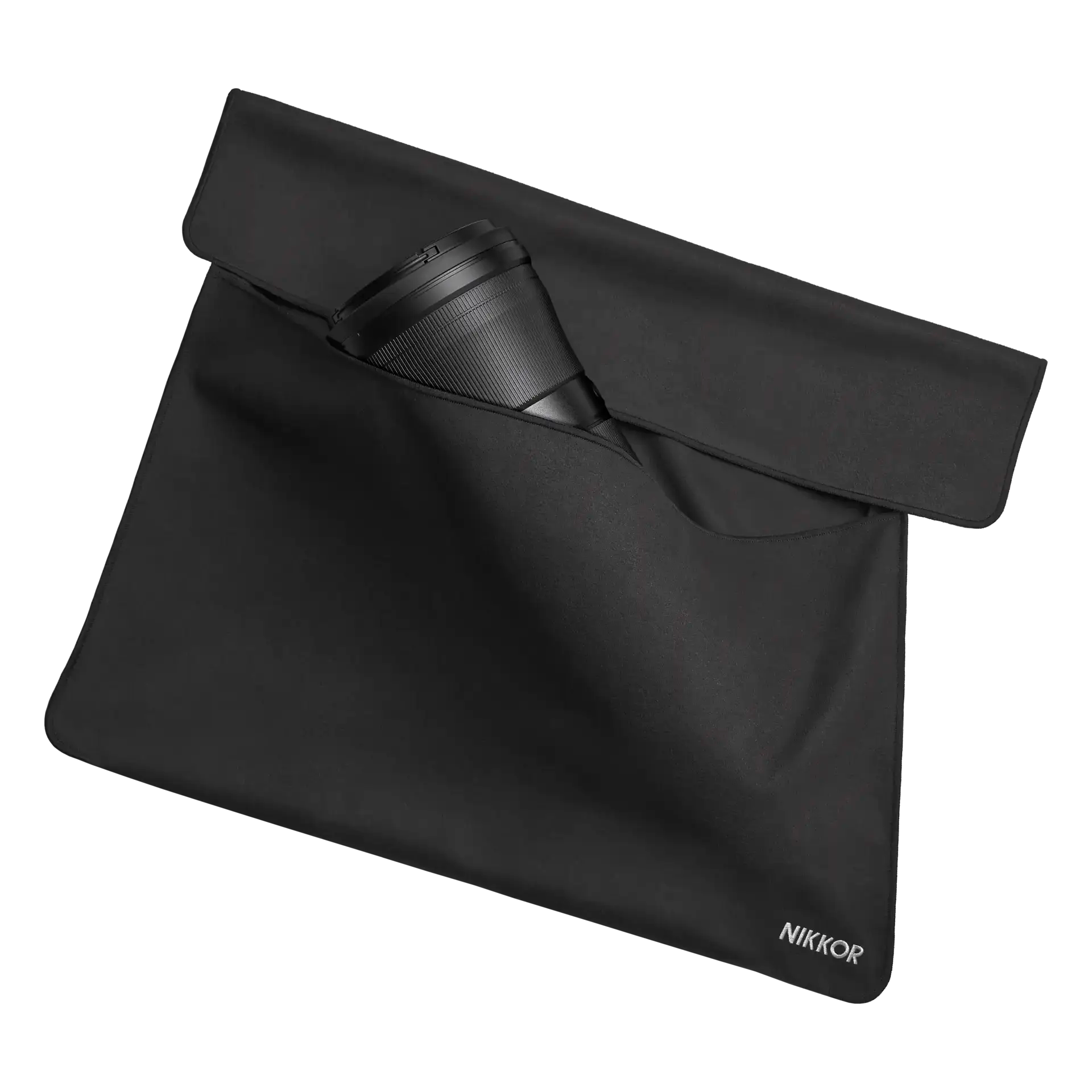Product Description
Nikon NIKKOR Z 600mm f/6.3 VR S Lens: Game-Changing Super-Telephoto in a Compact, Handheld Design
Step into the future of super-telephoto photography with the Nikon NIKKOR Z 600mm f/6.3 VR S Lens. This full-frame prime lens delivers the kind of premium optical resolution you’d expect from Nikon’s S-line, all packed into a surprisingly lightweight, compact form that redefines what’s possible for handheld super-telephoto shooting. Featuring advanced optical technologies like Phase Fresnel elements, ED (Extra-low Dispersion) glass, and Nano Crystal Coating, this lens ensures crystal-clear imagery with superb sharpness, contrast, and colour fidelity, even in challenging lighting conditions. Ideal for wildlife, sports, and action photography, the NIKKOR Z 600mm f/6.3 offers unparalleled reach in a portable, go-anywhere design.

A Revolution in Size and Weight
The NIKKOR Z 600mm f/6.3 VR S lens is a true engineering marvel, significantly smaller and lighter than its predecessor. Weighing in at less than half the weight and only two-thirds the length of traditional 600mm lenses, it allows photographers to experience handheld super-telephoto shooting without the need for tripods or monopods. This remarkable miniaturisation is achieved through the use of a Phase Fresnel (PF) element, which drastically reduces both size and weight while maintaining optical integrity. The result is a lens that’s under a foot long, fits into most camera bags with ease, and is always ready to capture fast-paced action or distant wildlife without the bulk of typical super-telephoto glass.

Outstanding Optical Performance
Despite its compact form, the NIKKOR Z 600mm f/6.3 delivers professional-grade optical performance. The lens incorporates ED (Extra-low Dispersion) glass elements and SR (Short-Wavelength Refractive) elements to effectively reduce chromatic aberrations, ensuring your images are sharp, vibrant, and free from colour fringing. Paired with Nano Crystal Coating, the lens minimizes ghosting and flare, providing superior contrast and clarity, even in bright or backlit conditions. The 95mm front filter thread offers versatility for using light-altering filters, enhancing your creativity in various shooting scenarios.

Superior Image Stabilization: Up to 5.5 Stops of VR
Handheld telephoto shooting is now more stable than ever thanks to Nikon’s Vibration Reduction (VR) technology, which offers up to 5.5 stops of image stabilization. This is particularly beneficial when shooting at long focal lengths, where even minor hand movements can affect image sharpness. For users of Nikon cameras that support Synchro VR (such as the Nikon Zf, Z8, and Z9), the stabilization can be extended to 6 stops, allowing for slow shutter speeds that were previously only possible with tripods. This powerful VR system ensures that your handheld shots are tack sharp, even in low light or when tracking fast-moving subjects.

Ergonomic Design and Customizable Controls for Precision Shooting
The compact size of the NIKKOR Z 600mm f/6.3 VR S is matched by its thoughtfully designed controls. The lens' centre of gravity has been moved closer to the camera body, providing better balance for handheld panning and tracking of fast-moving subjects. This is especially useful in sports and wildlife photography, where quick reactions and smooth handling are essential.

A suite of customizable controls offers precision at your fingertips:
- Two programmable function buttons let you quickly access frequently used settings.
- A customizable control ring allows you to adjust settings like aperture or ISO on the fly.
- A Memory Set button lets you store focus distances for instant recall, speeding up your workflow.
- A focus limiter switch enhances AF performance by limiting the focus range when photographing distant subjects.

All these tactile controls are designed to be used without taking your eye off the subject, ensuring smooth, intuitive adjustments as you shoot. The tripod collar rotates effortlessly, allowing for quick transitions between portrait and landscape orientations.

Built for the Elements
The NIKKOR Z 600mm f/6.3 is as rugged as it is refined. Featuring advanced weather sealing, the lens is built to keep out dust, dirt, and moisture, ensuring reliable performance in harsh outdoor conditions. Whether you’re shooting in rain, snow, or dusty environments, you can rely on the NIKKOR Z 600mm f/6.3 to keep performing. The front element is treated with a fluorine coating to repel water, dust, and fingerprints, making it easy to clean and maintain clarity in challenging conditions.
The lens also comes equipped with a Kensington Security Slot, allowing you to secure it with a pro-grade cable lock, perfect for safeguarding your valuable gear in public places or busy shooting environments.

Key Features of the Nikon NIKKOR Z 600mm f/6.3 VR S:
- 600mm Super-Telephoto Prime: Ideal for wildlife, sports, and action photography with exceptional reach.
- Compact and Lightweight: Two-thirds the length and less than half the weight of traditional 600mm lenses, making it easy to carry and shoot handheld.
- Phase Fresnel Element: Reduces the size and weight of the lens without compromising optical quality.
- ED and SR Elements: Minimise chromatic aberrations for sharp, clear, and vibrant images.
- 5.5-Stop VR Image Stabilization: Helps to achieve sharp handheld images, even at slow shutter speeds. Up to 6 stops with Synchro VR-supported cameras.
- Customizable Controls: Programmable buttons, control ring, Memory Set button, and focus limiter switch for intuitive handling and quick adjustments.
- Weather-Sealed Construction: Advanced sealing for protection against dust, dirt, and moisture.
- Nano Crystal Coating: Reduces ghosting and flare for improved image clarity.
- 95mm Filter Thread: Supports creative use of filters for a variety of lighting conditions.
- Fluorine-Coated Front Element: Repels water and dirt for easy maintenance in outdoor environments.
What’s in the Box:
- Nikon NIKKOR Z 600mm f/6.3 VR S Lens
- Front and rear lens caps
- Soft lens case
- Lens hood
- Tripod collar
Perfect for Wildlife, Sports, and Action Photographers
If you’re a photographer who demands the reach of a super-telephoto lens but doesn’t want to be weighed down by heavy gear, the Nikon NIKKOR Z 600mm f/6.3 VR S is the solution. Its compact size and lightweight design make it easy to handle for extended shooting sessions, while the advanced optics ensure your images are razor-sharp, even at long distances. Whether you're tracking fast-moving athletes or capturing elusive wildlife, this lens offers the performance and portability that modern photographers need.
Specifications at a Glance:
- Focal Length: 600mm
- Maximum Aperture: f/6.3
- Lens Construction: 19 elements in 14 groups (including 1 PF, 1 SR, and 3 ED elements)
- Vibration Reduction: Up to 5.5 stops (6 stops with Synchro VR)
- Filter Thread: 95mm
- Length: 315mm
- Weight: 1460g
- Weather Sealing: Dust- and water-resistant
Payment & Security
Your payment information is processed securely. We do not store credit card details nor have access to your credit card information.























